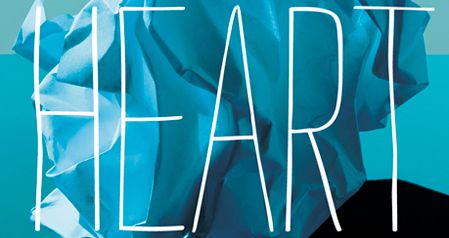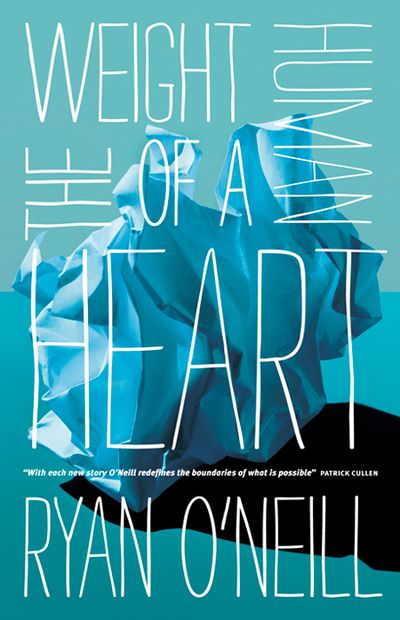Jessica Au from Readings St Kilda chats to Ryan O'Neill about his debut collection of short stories, **.

*One of the hallmarks of your writing is your ability to experiment with both voice and style. In * we find stories that record the breakdown of a marriage through infographics, or express a daughter’s grief and anger in typography. What can experimental fiction do that perhaps its more realist counterpart cannot? **

When reading realist fiction we suspend our disbelief because it is pleasant to believe that our lives, like realist stories, make sense. Experimental fiction dispenses with this idea, repeatedly drawing attention to the artificiality of fiction, and using this artificiality to tell stories in new and inventive ways.
All of this sounds very solemn, but for me experimenting with different styles and voices is a way to have fun, and to test my limits as a writer. As a reader, I love the stories of Borges and the novels of B.S. Johnson because of their inventiveness. They show that the ways of telling and presenting a story are inexhaustible, and not necessarily limited to realism.
Language and its slipperiness is also something that crops up regularly: an English teacher running the gamut of love and suspicion with his Hungarian wife, what goes unsaid between an Australian expat and his pregnant Chinese girlfriend. Why is our desire to understand, and yet our frequent inability to do so, such rich material for fiction?
Communication, or the lack of it, has always been a theme for writers. If you look at Shakespeare’s tragedies, most of them could have been cleared up without bloodshed if two characters had sat down and talked with complete honesty for five minutes. That they didn’t shows how perfectly Shakespeare grasped human nature.
There has always been, and will always be, a gap between what we say and what we feel. This is true of two native speakers of the same language. When one of the speakers is using English as a second language, which occurs in some of my stories, the probability of misunderstandings increases. From misunderstandings comes drama, which is probably why the inability to understand fills so much fiction.
My own interest in language dates from my father having a stroke when I was a child. My father was a voracious reader, but overnight he lost the ability to read, and also the ability to speak to us. Though his speech returned in an impaired form, he never regained his reading skills. When you see language taken away from someone you love, you realise how supremely important it is, however imperfect and flawed.
*You’ve lived in China, Europe and Africa, and indeed Rwanda, its people, schools and history, features strongly in several of your stories. Do you feel that travel has a powerful ability to shape us as writers? *
I think travel has an enormous ability to shape us as human beings, and from that it shapes us hugely as writers. Experience is the currency that writers draw on for their stories, and one of the best ways to gain experience is to travel. Some writers, like Greene and Hemingway, made deliberate decisions to travel widely, and sometimes dangerously, in order to fuel their writing.
In my own case, travel followed naturally from my job, English language teaching, and gathering material for future stories never crossed my mind. It was only several years after settling in Australia that I began to write about the places I had been.
Having been born and raised in Scotland, I sometimes feel like a traveller in this country even now, and this has shaped my writing in that I don’t believe I share the same interest in certain themes and settings that preoccupy many Australian writers.
*I often feel that the short story form has more potential for perfection than any other, partly because of its slenderness and the triage-like nature of its demands. Do you agree? What is it that draws you about short fiction? *
One of my favourite quotes is from J.G. Ballard, who said that there had been no perfect novels, but several perfect short stories. (Personally, I would choose stories by J.D. Salinger, Katherine Mansfield and Ernest Hemingway as examples of perfection).
I agree that short stories hold out the promise of perfection for a writer, because of their length and their narrowness of focus. They are certainly more manageable than a novel. You can pick up a short story and examine it from every angle and put it down again, all the while keeping the whole in mind. You can’t do that with a novel. This doesn’t mean they are easier to write, or that they are necessarily harder. They are just different.
I’m drawn to short fiction because it allows me to range more freely than a novel. I can write a story in set in Africa, then one in Scotland and one in Lithuania without having to worry about tying them together. Short stories are also ideal for experimentation. An unusual style or plot can be explored quickly without wearying the writer or the reader. A failed short story might take a month to write. A failed novel can take years. And even if the novel is a success, it can never be as perfect as a perfect short story.
Several of the stories in
I think the basic principles of writing can be taught, such as narrative structure and so on, and it can be useful to workshop a story as long as constructive feedback is available.
There are undoubtedly more technically competent writers around now than at any other time in history. But the best way to learn how to write is to read. The rise in creative writing classes in Australia and elsewhere has occurred at the same time as the decline in English literature classes. Everyone, it seems, wants to be a writer and no one wants to be a reader.
All writing is based on what has gone before. As someone once said, books make other books. The best teachers that a writer can have are not in a creative writing class, but on the bookshelves of a library. I don’t believe there can be good writers who are not also good readers.
Finally, I have to ask about the cover, which is so apt and layered. What was your experience of the design process from the writer’s seat?
Watching the cover design develop over several months was a fascinating experience. The first design was a striking red human heart, complete with veins. This provoked widely differing reactions from people. Some loved it, whilst others really disliked it. While I thought it was a bold, eye-catching choice, it didn’t quite capture the book for me.
The designer then came up with three more possible covers. All of them were ingenuous, and beautifully done. My favourite was a depiction of the organs in a human torso constructed from origami. It was lovely, and perfectly conveyed many of the main themes of the book. But while the first cover was too bold, this one was unfortunately too subtle, and it soon became clear that the design would not stand out in a crowded bookshelf.
Again, the designer went away and returned with yet another cover design, this time taking a very different approach, and showing a young woman balancing books on her head, with the title where her face would be. While this spoke well to one of the stories in the collection, I didn’t feel it represented the book as a whole, and I had another exchange with my editor in which we discussed what we wanted the cover to convey. By this time a deadline for finalising the cover was fast approaching, and the next round of designs would be the last.
I remember nervously opening the email with the final four designs, looking at the one on the top left, and instantly thinking ‘That’s the one!’. In fact, any of the last designs would have been great, but the scrunched up ball of paper was perfect for the book, as was the fact that it resembles, at least to me, a human heart.
I have no idea if all publishers take as much notice of their authors when it comes to cover design. I suspect that they don’t, and that I have been very fortunate. I am extremely grateful to my editor, Denise O’Dea and designer Peter Long, for their willingness to return to the drawing board not once, but several times, until we found the perfect cover for the book.
The Weight of a Human Heart



